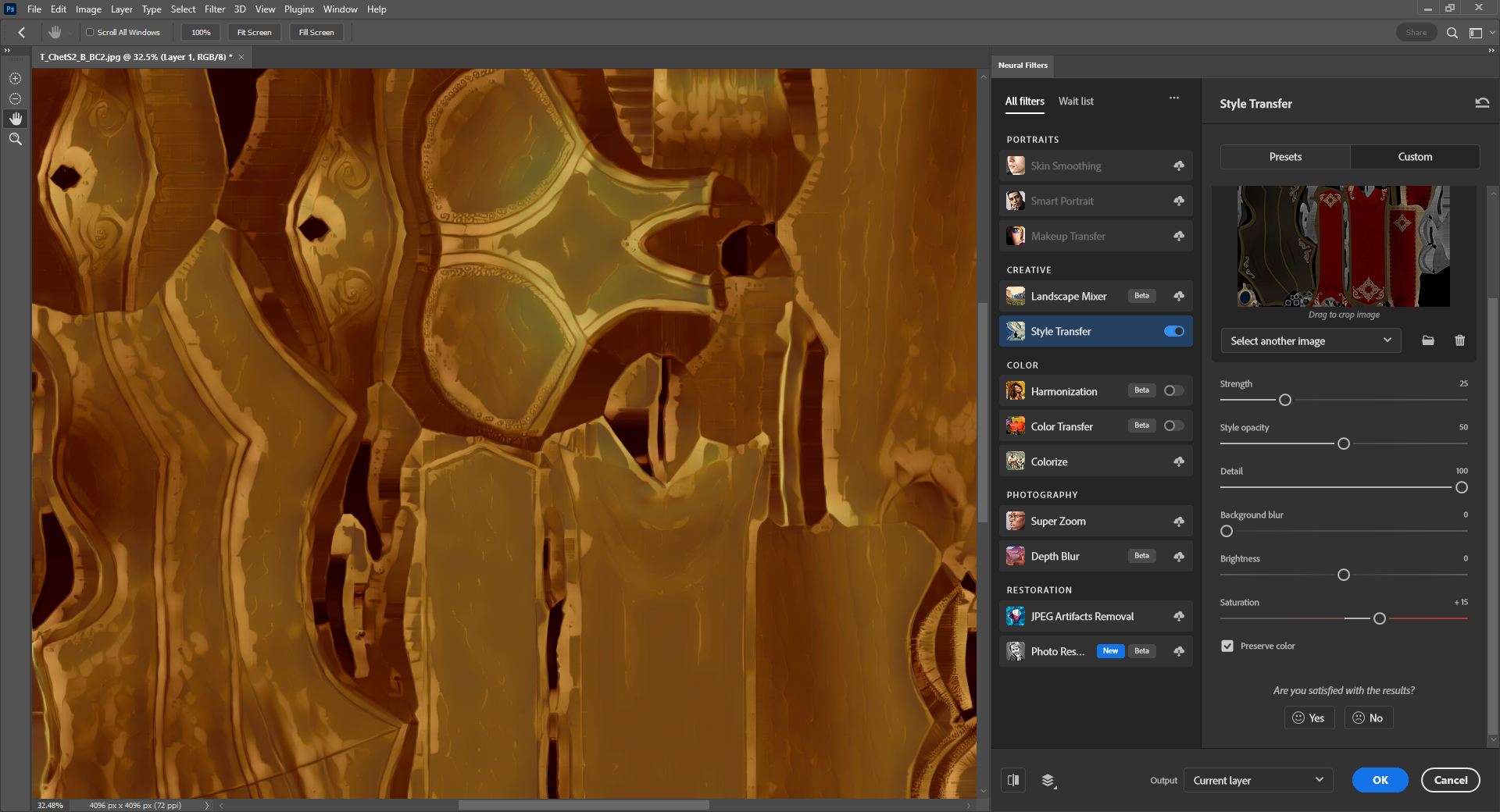How AI Is Already Taking Over
After exploring the use of AI to generate game textures, I wondered if it could also generate the dev log about it. The thought of AI writing a dissertation on itself intrigued me, and the results kind of scare me. The following report is entirely AI generated except for the pictures and titles.
Introduction:
Photoshop is a popular software used by graphic designers and digital artists to create and edit images and videos. One of the features of Photoshop is the ability to use neural filters, which are based on artificial intelligence (AI) and machine learning algorithms, to generate various effects on images and videos.
One potential use of Photoshop's neural filters is to generate texture for video games. Textures are an essential part of video game graphics, as they provide a visual representation of the surfaces and objects in the game world. Traditionally, texture creation for video games has been a labor-intensive process, involving the use of specialized software and a lot of manual work.
However, with the advent of AI-powered neural filters, the process of creating video game textures has become much easier and more efficient. Using Photoshop's neural filters, artists can quickly and easily generate a wide range of textures for different surfaces and objects in a game, such as metal, stone, wood, and more.
One of the key advantages of using Photoshop neural filters for video game texture generation is the ability to create high-quality, realistic textures quickly and easily. The neural filters use machine learning algorithms to analyze a reference image and generate a texture that matches the look and feel of the original image. This means that artists can generate textures that are highly detailed and realistic, without having to spend a lot of time and effort on manual creation.
Applications:
Another advantage of using Photoshop's neural filters for video game texture generation is the ability to create a wide range of variations on a single texture. For example, an artist could use a neural filter to generate a wood texture, and then use the same filter to create variations of the texture with different colors, patterns, and details. This allows artists to quickly and easily create a wide range of textures for use in their video game, without having to create each texture from scratch.
Conclusion:
In conclusion, Photoshop's neural filters are a powerful tool for generating video game textures. They provide a quick and easy way to create high-quality, realistic textures, and allow for a wide range of variations on a single texture. As a result, they can help save time and effort for video game artists, and improve the overall quality of the game's graphics.
I was shocked by how accurate, knowledgeable the report was, and it was created in seconds as opposed to the hours I spent. I’m both amazed and disheartened by this discovery and going forward, it may be incredible difficult to tell what content on here is human or intelligent machine.
Now, go read the human article “Using AI to Generate Game Assets“ and let shivers run down your spine. AI is already smarter than us.






